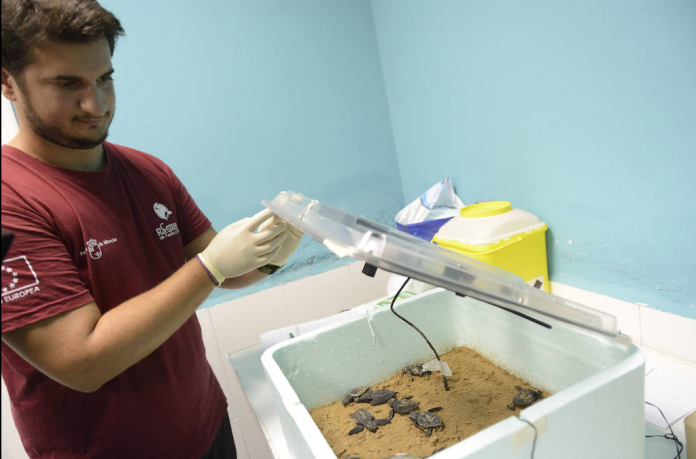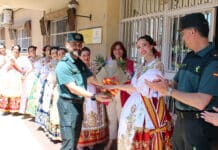
By Andrew Atkinson
MARINE turtles have been released in the Mediterranean – hatched from the first eggs nest-laying in over a century on a Murcia beach – in the wake of the threat of losing them in the Gota Fria storms.
The 25 turtles will have a personal ‘identification number’ placed on their shell, born after the historic spawning of a loggerhead turtle in Calblanque, in July.
The El Valle Wildlife Recovery Centre have looked after the quelonios, in facilities in the mountains of Murcia.
It is the first nest of turtles in the Region of Murcia in over a century – the last documented nesting was made in La Manga, in the late 19th century.
Sea turtles historically return to the place where they were born – to lay their eggs -scientifically known as phylopatry.
It is hoped new future generations of turtles will return along the Cartagena coast, in the decades ahead.
Concerns of the survival of the turtles of ‘Caretta caretta’, born in Cala Arturo and the Wildlife Centre, where neonates and eggs were moved – without hatching – due to safety reasons in the Gota Fria storms, that endangered the nest.
“This unique event has to serve so that society is convinced of the need to protect the Marine environment,” said Veterinarian Alicia Gómez de Ramón.
“Also, so that the great natural wealth we have in the Region of Murcia is known,” she said.
A team of Veterinarians, including María José Gens, and Fernando Escribano, met at Calblanque, along with the general director of the Natural Environment, Fulgencio Perona, releasing adult loggerhead turtles, cured in El Valle.
Alicia Gómez said additional turtles’ eggs will be taken to the Imida tanks, at the Murcian Institute of Agricultural and Food Research and Development, in San Pedro del Pinatar, to start the captive breeding process at the Centre of Marine Resources.
In the summer of 2020 the turtles will be released into the Mediterranean sea.
Loggerhead turtles have visited the Mediterranean sea, away from their usual spawning places, including the Atlantic, in Florida and Cape Verde.
The turtles’ breeding season also included nests found for the first time, in Castellón and Ibiza.














